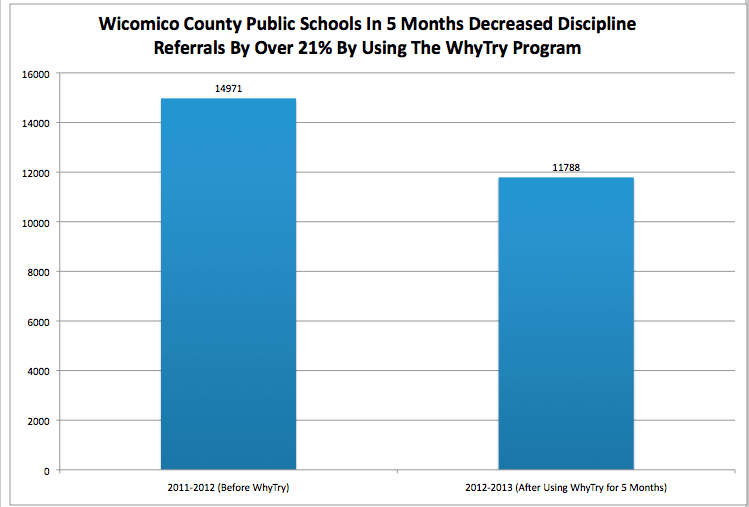Wicomico County, MD

To ease the transition from elementary to middle school, the WhyTry program is taught on a school-wide level.
The transition between elementary school and middle school can be difficult to make. That is why Liz Hastings, Principal at Bennett Middle School, has focused on training her 6th-grade teachers on how to implement the WhyTry program. Keep reading to learn more.

Reducing Disciplinary Referrals
WhyTry has helped students and teachers alike respond to a variety of obstacles, mainly attendance and disciplinary referrals. Liz explained that WhyTry is building teamwork:
“Our teachers are more focused on building relationships with students and helping students reflect on behaviors.”
Liz adds that understanding is key. If the teachers truly understand why and how to build relationships with students, the entire atmosphere of the school will change.
“WhyTry has given [teachers] an avenue to build relationships with students,” she says. “…We’ve not just been taught how to verbally communicate with students… but to ask how we can REACH the students.”
Liz notes that the teachers have experienced a paradigm shift. Instead of meeting and talking about what’s wrong with students they are saying “What can we do differently?”
We knew there was a disconnect between relationships. We were looking for how to help our students and staff establish relationships [with one another]. WhyTry did that in a creative way.

Reducing Suspensions
The change isn’t just happening with the teachers. Kim Miles, Education Director for the Wicomico School District, says:
“A lot of [the changes] start in the classrooms but [they] carry over into an ongoing presence throughout the school, whether it’s in the classroom, the cafeteria, the gymnasium, or waiting on the bus ramp. Relationships lead to engagement. Engagement is the key to achievement and success.”
All across the district, schools in Wicomico County are seeing the positive effects of WhyTry. Teachers and Administrators are seeing the students implementing WhyTry strategies when faced with conflict.
Whether the students face conflict with their peers, academic hurdles, or need one-on-one disciplinary attention, students have been able to engage with themselves and others, see where the problem began, and how to work through it. One 5th grader from Pemberton Elementary explained that the metaphor that helped him the most was ’Defense Mechanisms’. He added:
“If someone called [me] a name, [I] would never fight back. [I] would just walk away. My behavior has changed. I’m more tolerating of students and more respectful to my teachers.”